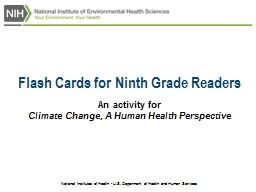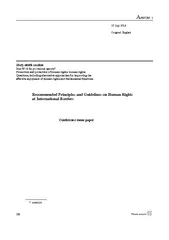PPT-Flash Cards for Ninth Grade Readers
Author : scarlett | Published Date : 2023-11-20
An activity for Climate Change A Human Health Perspective A Student Exploration of the Impacts of Climate Change on Human Health in the United States A warmer
Presentation Embed Code
Download Presentation
Download Presentation The PPT/PDF document "Flash Cards for Ninth Grade Readers" is the property of its rightful owner. Permission is granted to download and print the materials on this website for personal, non-commercial use only, and to display it on your personal computer provided you do not modify the materials and that you retain all copyright notices contained in the materials. By downloading content from our website, you accept the terms of this agreement.
Flash Cards for Ninth Grade Readers: Transcript
Download Rules Of Document
"Flash Cards for Ninth Grade Readers"The content belongs to its owner. You may download and print it for personal use, without modification, and keep all copyright notices. By downloading, you agree to these terms.
Related Documents














